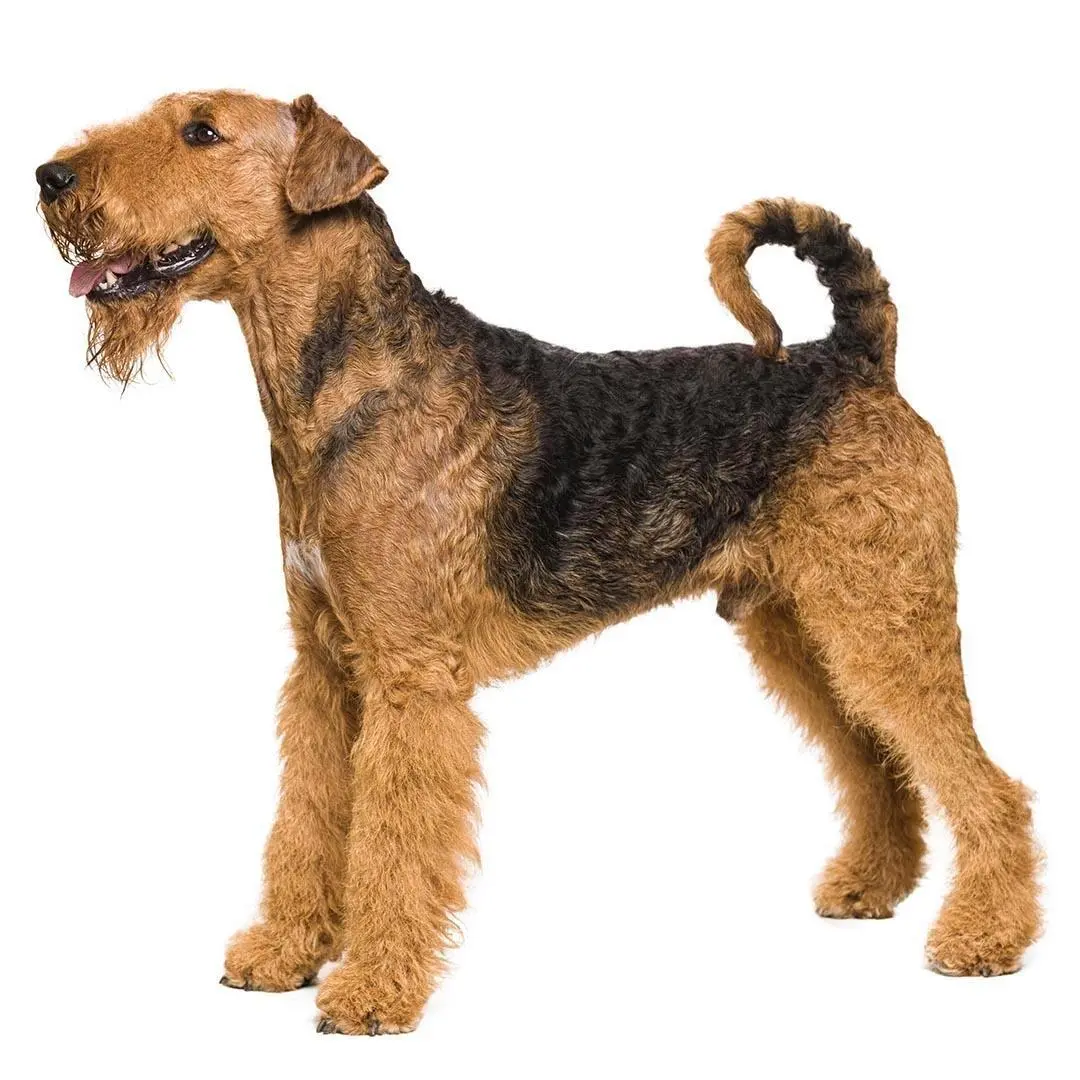
Airedale Terrier
Airedale Terriers are medium-sized dogs with a wiry coat. They are very active and resilient.
Extended Description
The Airedale Terrier is the largest of all terrier breeds and is known as the "King of Terriers." Originally bred in the Aire Valley of Yorkshire, England, to catch otters and rats, Airedales are versatile dogs that have been used for a variety of tasks, including hunting, guarding, and military work. They are highly intelligent, independent, and full of energy, making them excellent companions for active families. Airedales are known for their distinctive wiry coat, which is hypoallergenic and requires regular grooming.
Interesting Facts
During World War I, Airedale Terriers were used as messenger dogs and for finding wounded soldiers on the battlefield.
Care Recommendations
Airedale Terriers require regular exercise to burn off their high energy levels. This can include walks, runs, and plenty of playtime. Their wiry coat needs regular grooming, including brushing and occasional hand-stripping to maintain its texture and prevent matting. Airedales are intelligent but can be stubborn, so consistent training with positive reinforcement is important. Socialization from a young age will help them develop into well-rounded dogs. Regular veterinary check-ups are essential to monitor their health and prevent common issues such as hip dysplasia and skin conditions.
Temperament
Airedales are energetic, intelligent, and independent. They are known for their loyalty and versatility in various tasks.
Health Issues
They are prone to hip dysplasia and skin issues. Regular vet visits are important to monitor their health.
Living Conditions
Airedales adapt well to both rural and urban living, as long as they receive enough exercise and mental stimulation.
Training Tips
They respond well to positive reinforcement but require consistent and patient training due to their independent nature.
Exercise Needs
Airedales require extensive exercise, including daily walks, runs, and activities that engage their minds, such as agility or obedience training.
Return to Other Breeds



